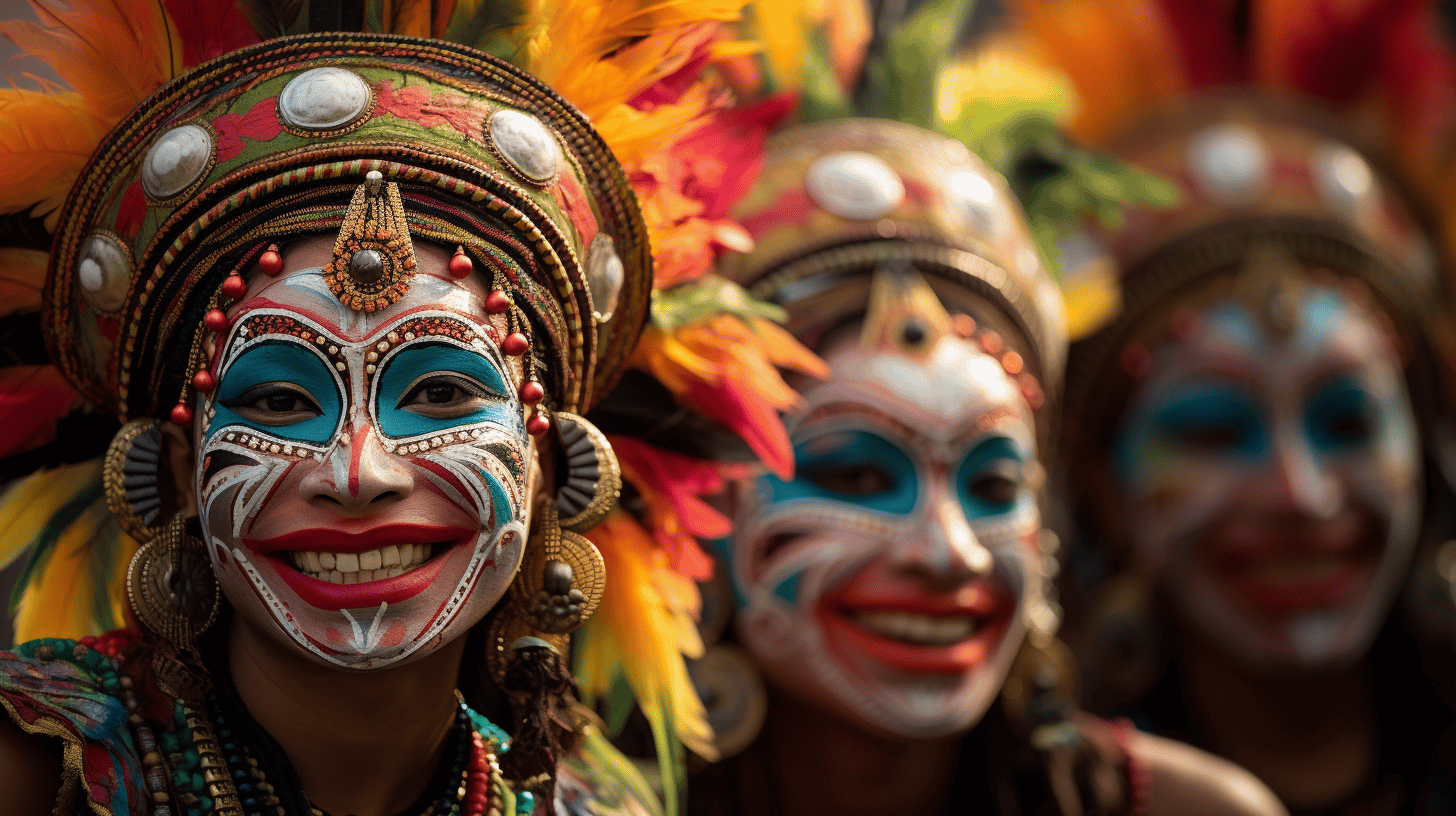In a world where cultures are constantly intertwining and borders are becoming more open, embracing cultural diversity has become a crucial aspect of our society. People are finding ways to immerse themselves in different cultures and countries, seeking experiences that go beyond the ordinary tourist attractions. One such way is through destination photography tours.
Destination photography tours have gained significant popularity among photography enthusiasts and travelers alike. These tours provide a unique opportunity to explore new destinations while capturing stunning photographs of the local culture, scenery, and people. Whether you’re a beginner photographer or a seasoned professional, these tours offer a chance to expand your skills, learn from experienced photographers, and create lasting memories.
On a destination photography tour, you’ll have the chance to wander through vibrant markets, visit ancient temples, interact with locals, and capture the essence of a destination through your lens. The focus goes beyond simply taking pretty pictures; it is about telling a story, capturing the soul of a place, and preserving cultural heritage through imagery. It’s a way to connect with people, understand their way of life, and develop a deeper appreciation for the world we live in.
Why choose a destination photography tour over a regular guided tour, you might ask? Well, these tours offer a unique blend of cultural exploration and photography education. You’ll have the guidance of experienced photographers who know the destinations inside out, can show you the best spots for capturing memorable shots, and provide valuable tips and techniques to enhance your photography skills. It’s like having a personal photography mentor while exploring the world!
Moreover, destination photography tours foster cultural appreciation and understanding. By engaging with local communities and documenting their traditions, daily life, and celebrations, you’ll not only create beautiful photographs but also contribute to the preservation and promotion of cultural diversity. Through your lens, you can tell stories that transcend language barriers and create awareness about the importance of cultural heritage.
So, if you have a passion for photography and a desire to explore the world from a unique perspective, why not consider embarking on a destination photography tour? It’s a perfect opportunity to expand your horizons, celebrate cultural diversity, and capture breathtaking images that will forever remind you of the beauty and richness of our world.
Cultural tourism has been steadily gaining popularity in recent years, with more and more travelers seeking immersive experiences that go beyond the typical sights and landmarks. This type of tourism allows visitors to deeply engage with the local culture, traditions, arts, and heritage of a destination.
- Through cultural tourism, travelers can gain a deeper understanding of a place by interacting with its people, participating in local festivals and events, exploring museums and cultural sites, and even trying traditional cuisine. It offers a unique way to experience a destination and create meaningful memories.
- Global cultural tourism revenue is projected to reach an impressive US$5,931.2 million by 2023[1]. This indicates not only the growing interest in this form of travel but also the economic potential it holds for destinations around the world.
- Unfortunately, the COVID-19 pandemic has had a significant impact on cultural tourism. In 2020, international arrivals for cultural tourism dropped by a staggering 74% worldwide[2]. Travel restrictions and safety concerns made it difficult for tourists to engage in cultural experiences. However, as the world gradually recovers from the pandemic, it is expected that cultural tourism will regain its popularity and thrive once again.
- One of the significant advantages of cultural tourism is its positive effect on employment. It contributes to the employment of 9.5 million people in the travel and hospitality sector[3]. This includes not only tour guides and hotel staff but also artisans, performers, traditional craftsmen, and individuals involved in preserving and promoting local culture.
In a world where travelers are increasingly seeking authentic and meaningful experiences, cultural tourism provides a perfect avenue for exploration. It allows visitors to immerse themselves in the traditions and heritage of a destination while supporting the local economy and communities. As the industry gradually recovers from the impact of the pandemic, we can expect cultural tourism to once again flourish, providing enriching experiences for travelers and benefiting destinations around the world.
[1] Link to source
[2] Link to source
[3] Link to source
Promotes cultural exchange, cross-cultural understanding, and appreciation of diversity.
One of the key benefits of cultural diversity in tourism is the opportunity for cultural exchange. When tourists visit destinations with diverse cultures, they have the chance to interact with locals, participate in cultural activities, and gain insights into different ways of life. This exchange not only fosters mutual understanding but also breaks down stereotypes and fosters tolerance and respect for different cultures.
Diverse leadership in the tourism industry is lacking
Despite the significance of cultural diversity in tourism, the industry itself has been slow to address the issue of representation. There is a lack of diversity in leadership positions within the tourism sector, with fewer than 2% of executives in the hospitality industry being Black, for example. This lack of representation not only limits diverse perspectives in decision-making but also hinders the industry’s ability to effectively cater to a diverse range of travelers.
Cultural tourism accounts for nearly 37% of global tourism
The popularity of cultural tourism speaks volumes about its significance in the industry. Cultural tourism, which involves traveling specifically to experience the arts, heritage, and cultural attractions of a destination, accounts for nearly 37% of global tourism. This shows that travelers are actively seeking out opportunities to engage with different cultures, explore historical sites, and appreciate the richness of diverse traditions.
So, it is clear that cultural diversity in tourism is not only significant but also in demand. It enhances the travel experience, facilitates cultural exchange, and promotes cross-cultural understanding. By embracing cultural diversity, the tourism industry can cater to the evolving needs of travelers and ensure a more inclusive and enriching experience for everyone involved.
Cultural diversity is a significant aspect of the hospitality industry, shaping everything from hotel planning to the service provided to diverse clientele. Embracing cultural diversity not only makes business sense but also promotes inclusivity and creates meaningful connections with customers from various backgrounds. Let’s explore the impact of cultural diversity in the hospitality industry and how it can lead to enhanced collaboration and innovation.
Embracing Diversity in the Planning Stages
When planning hotels or designing service offerings, it’s crucial to consider the diverse needs and preferences of customers from different cultural backgrounds. The planning process should take into account various factors such as:
- Cultural traditions and customs: Understanding the cultural practices and preferences of your target audience can help tailor experiences that resonate with them. For example, offering Halal food options for Muslim guests or providing prayer rooms can enhance their overall experience.
- Language considerations: Providing multilingual staff and offering translated materials can facilitate effective communication with international guests. It shows that you value their language and cultural identity, making them feel more comfortable and welcome.
- Accessibility requirements: Cultural diversity also includes individuals with different abilities. Ensuring accessibility features, such as wheelchair ramps, braille signage, or audio descriptions, not only complies with legal obligations but also creates a more inclusive environment for all guests.
By considering these factors during the planning stages, hotels can cater to the diverse needs of their clientele and create an inclusive environment that fosters positive guest experiences.
Engaging Culturally Diverse Communities
Engaging and connecting with culturally diverse communities is crucial for hotels and hospitality organizations. Building genuine relationships with these communities can lead to:
- Increased visibility and reputation: By actively engaging with culturally diverse communities, hotels can establish themselves as inclusive and welcoming destinations. This can lead to positive word-of-mouth, increased brand loyalty, and a competitive edge over other establishments.
- Tailored marketing and service offerings: Understanding the preferences, interests, and values of different cultural groups allows hotels to tailor their marketing efforts and service offerings accordingly. For example, showcasing cultural events or offering unique experiences that resonate with specific communities can attract more guests and create a buzz around the hotel.
- Collaborative partnerships: Engaging with culturally diverse communities opens doors to collaborative partnerships and mutually beneficial initiatives. Hotels can work with local organizations or ethnic community groups to organize cultural festivals, food tastings, or cultural exchange programs. These partnerships not only promote diversity and cultural understanding but also help create new business opportunities and revenue streams.
Enhanced Collaboration and Innovation
Having a culturally diverse team within the hospitality industry can lead to enhanced collaboration and innovation. When individuals from different cultural backgrounds come together, they bring their unique perspectives, experiences, and innovative ideas to the table. This diversity of thought can:
- Foster creativity and problem-solving: The inclusion of diverse perspectives encourages creative thinking and problem-solving. Different cultural backgrounds can offer fresh insights and alternative solutions that may not have been considered otherwise.
- Improve customer service: A team that reflects the diversity of the customer base can better understand and empathize with the needs and expectations of different cultural groups. This understanding can lead to improved customer service, personalized experiences, and ultimately, higher customer satisfaction.
- Drive innovation: In a rapidly changing industry, innovation is key to staying ahead. A diverse team can bring fresh ideas and different approaches to challenges, leading to innovative solutions and a competitive advantage.
By embracing cultural diversity and fostering an inclusive environment, the hospitality industry can benefit from collaborative and innovative practices that enhance guest experiences and contribute to long-term success.
In conclusion, cultural diversity plays a vital role in the hospitality industry. By embracing diversity in the planning stages, engaging with culturally diverse communities, and fostering a diverse team, hotels can create meaningful and inclusive initiatives that enhance collaboration, innovation, and guest experiences. Embracing cultural diversity is not just the right thing to do; it’s a smart business strategy in today’s globalized world.
Cultural diversity in the workplace can be both enriching and challenging. While it brings new perspectives and ideas, it also poses unique obstacles that must be navigated for a harmonious and productive environment. Effective management of cultural diversity is crucial in fostering inclusion, reducing biases, and promoting collaboration among team members. Let’s explore some of the key challenges that organizations face in managing cultural diversity and how they can be effectively addressed.
1. Communication barriers
- Language differences: When employees come from diverse linguistic backgrounds, communication can become a significant challenge. Misunderstandings and misinterpretations can easily occur if messages are not conveyed clearly and precisely.
- Non-verbal communication: Different cultures have varying norms and interpretations of body language, gestures, and facial expressions. This can lead to confusion or miscommunication, impacting collaboration and teamwork.
To address these challenges:
- Encourage open and respectful communication among team members.
- Provide language classes or interpreters to bridge language gaps.
- Promote active listening and the use of clear and concise language to enhance understanding.
2. Stereotypes and biases
- Unconscious biases: People often hold unconscious biases based on cultural stereotypes, which can lead to unfair treatment or exclusion of individuals from different backgrounds.
- Prejudice and discrimination: Cultural differences can sometimes cause prejudice and discrimination to arise, creating a hostile work environment.
To address these challenges:
- Implement diversity training and unconscious bias workshops to increase awareness and foster a culture of inclusion.
- Encourage employees to challenge their own biases and assumptions.
- Establish clear policies against discrimination and ensure they are strictly enforced.
3. Conflicting values and norms
- Different work styles: Cultures have different expectations and approaches towards work. This can result in conflicts when team members have contrasting work styles or preferences.
- Varying communication styles: Directness, hierarchy, and decision-making processes can vary across cultures, leading to misunderstandings and friction.
To address these challenges:
- Foster a culture of understanding and respect for different work styles and communication approaches.
- Encourage team members to learn from each other’s cultural practices and find common ground.
- Facilitate open dialogue and mediation to resolve conflicts and promote collaboration.
4. Lack of representation and inclusion
- Marginalization: Employees from minority cultures may feel excluded or marginalized, leading to lower job satisfaction, decreased productivity, and higher turnover rates.
- Inadequate representation: Lack of representation at management and leadership levels can hinder diverse voices and perspectives from being heard and valued.
To address these challenges:
- Create initiatives that promote diversity at all levels of the organization.
- Establish mentorship programs to support employees from diverse backgrounds.
- Encourage employee resource groups where individuals can connect and provide support to one another.
By recognizing and respecting cultural differences, organizations can create a more inclusive workplace where employees feel valued and supported. Effective management of cultural diversity involves ongoing learning, open communication, and a commitment to fostering an inclusive environment. By navigating the challenges and capitalizing on the strengths that cultural diversity brings, organizations can harness its potential and provide a positive guest experience.
In conclusion, embracing cultural diversity in destination photography tours can offer enthusiasts a unique and enriching experience like no other. By immersing themselves in different cultures, travelers have the opportunity to capture the essence of diverse communities, traditions, and ways of life.
Cultural tourism has been gaining popularity over the years, as people seek meaningful and immersive travel experiences. This trend not only benefits the tourists themselves but also contributes to the preservation and promotion of local cultures and heritage. It helps create a more inclusive and understanding society that celebrates diversity.
The significance of cultural diversity in tourism cannot be overstated. It adds depth and authenticity to the travel experience, allowing individuals to connect with the local community on a deeper level. Through destination photography tours, enthusiasts can capture moments that reflect the true essence of a place, its people, and its traditions.
The hospitality industry plays a crucial role in embracing and promoting cultural diversity. By training staff to be culturally sensitive and providing opportunities for local artisans and craftsmen to showcase their talents, hotels and resorts can enhance the overall guest experience. This not only contributes to the success of the business but also fosters mutual respect and understanding among people from different backgrounds.
However, embracing cultural diversity also comes with its challenges. From language barriers to differences in customs and traditions, travelers may encounter various obstacles along the way. It is crucial for tour operators, hotels, and local communities to work together to provide inclusive and welcoming environments for travelers from all walks of life.
In the management of cultural diversity, it is essential to prioritize respect, empathy, and open-mindedness. By valuing and preserving cultural heritage, engaging in meaningful interactions, and promoting responsible tourism practices, we can create a world where diversity is celebrated and cherished.
So, whether you are an avid photographer seeking inspiration or simply a traveler looking for a unique and memorable experience, destination photography tours that embrace cultural diversity are definitely worth considering. Step out of your comfort zone and embark on a journey that will not only broaden your horizons but also deepen your appreciation for the rich tapestry of cultures that make our world so vibrant and fascinating.
Remember, the world is full of incredible stories waiting to be captured through your lens. Embrace cultural diversity, explore new horizons, and let your photographs tell the tales of our interconnected world.
Frequently Asked Questions
- What are destination photography tours?
Destination photography tours are organized trips where photography enthusiasts visit various locations around the world to capture unique and culturally diverse images. These tours provide opportunities to explore different landscapes, architecture, people, and traditions, while improving photography skills.
- Who can participate in destination photography tours?
Destination photography tours are open to anyone with an interest in photography. Whether you are a beginner or an experienced photographer, these tours offer valuable insights, guidance, and mentorship for photographers of all skill levels.
- What are the benefits of joining a destination photography tour?
Joining a destination photography tour allows you to immerse yourself in new cultures, experience breathtaking destinations, and enhance your photography skills under the guidance of professionals. It also provides opportunities to network with like-minded individuals and create lasting memories.
- How do I choose the right destination photography tour?
When selecting a destination photography tour, consider factors such as the tour organizer’s reputation, itinerary, destinations covered, group size, duration, cost, accommodations, and photography opportunities offered. Read reviews, compare multiple tours, and choose one that aligns with your interests and preferences.
- What camera equipment should I bring on a destination photography tour?
The camera equipment you should bring on a destination photography tour depends on your skills and preferences. However, it is recommended to carry a versatile DSLR or mirrorless camera, a range of lenses (wide-angle, telephoto, and prime), a sturdy tripod, extra batteries, memory cards, and necessary accessories for cleaning and protection.




0 Comments